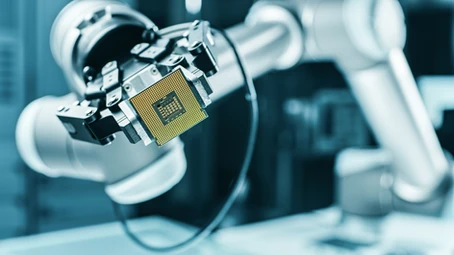What is the relationship of innovation with employment?
Updated: Apr 8, 2023

Innovation has been a crucial driver of economic growth and social progress, and it has revolutionized the way we live, work, and communicate. However, innovation has also disrupted traditional industries and occupations, leading to concerns about the impact of innovation on employment. With the rise of artificial intelligence and automation, this issue has become even more concerning, as machines are increasingly able to perform tasks previously done by humans.
Innovation has been a major source of job creation and economic growth in many industries. New technologies, products and services have created new opportunities for businesses to expand and for workers to acquire new skills and knowledge. A report by the McKinsey Global Institute estimates that up to 375 million workers worldwide may need to switch occupational categories and learn new skills by 2030 due to automation and other technological advances, but also predicts that these changes could create up to 285 million new jobs globally. This highlights the potential for innovation to create new jobs and opportunities, even as it displaces some workers from their current roles.
However, the impact of innovation on employment is not always positive. In some cases, innovation can lead to job losses and structural unemployment, as industries and occupations become not so sought after as they were before. For example, the widespread adoption of automation and robotics in manufacturing has led to a decline in manufacturing employment in many countries. Similarly, the rise of e-commerce has disrupted traditional retail industries, leading to job losses in “brick-and-mortar” stores. A study by the Oxford Martin School estimates that 47% of US jobs are at high risk of automation in the next decade or two, including many jobs in transportation, logistics, retail and food service.
One of the key factors that determines the impact of innovation on employment is the nature of the innovation itself. Some innovations are labour-saving, meaning that they reduce the need for human labour and can replace workers. Other innovations are labour augmenting, meaning that they complement human labour and can increase productivity and employment. For example, the adoption of information and communication technologies has been found to increase employment and wages in many industries, by improving efficiency and enabling new business models. Additionally, a study by the World Bank found that the adoption of broadband internet in developing countries decreased the proportion of households falling below the national basic need poverty line dropped by 7 percentage points.
In addition to the nature of the innovation, the impact of innovation on employment also depends on the skills and education of the workforce. Technological advances can create demand for new skills and knowledge, while reducing demand for low-skilled and routine tasks. This can lead to a skills mismatch, where there are not enough workers with the skills that are in demand. The McKinsey report mentioned earlier highlights the need for workers to acquire new skills and knowledge to adapt to the changing nature of work. However, the report also notes that there are significant barriers to reskilling and upskilling, such as lack of access to training, financial constraints, and social and cultural barriers
Subsequently, another key factor that influences the impact of innovation on employment is the policy environment. Government policies can shape the direction and pace of innovation and can also mitigate the negative effects of innovation on employment. For example, policies that promote education and training, labour market flexibility, and social safety nets can help workers adapt to changes in the labour market. A study by the Organization for Economic Cooperation and Development found that countries with higher levels of labour market flexibility and social protection have on average 40% lower rates of job displacement due to automation compared to countries with lower levels of these policies.
The relationship between innovation and employment is complex and multifaceted. While innovation has the potential to create new jobs and opportunities, it can also lead to job losses and structural unemployment, especially in industries and occupations that are susceptible to automation and other technological advances. To maximize the benefits of innovation while minimizing the costs, it is essential to invest in education and training, promote labour market flexibility, and ensure social protection for workers who are displaced by technological change. Policymakers and business leaders need to work together to create a policy environment that supports innovation and maximizes its benefits for society as a whole.

